Antinol® Latest Studies
Sorted by recent
 Filter Studies by Smart Tags
Filter Studies by Smart Tags
Bone & JointCardiovascularCase Study & ProceedingCatDogEAB 277™EfficacyExotic PetImmunologyNeuro & BehaviorOphthalmologyOralRabbitRenalRespiratoryRodentSafetySkinUTI
Smart Search
Antinol® Case Study Contest 2022


Antinol® Case Study Contest 2020

The 8 Case Studies from Antinol® Case Study Contest of 2020.
________
1st Winning Awards
1) Use of PCSO-524® and Cyclosporin for Treatment of Immune-Mediated Polyarthritis in Dogs
2) Use of PCSO-524® for Supplementary Treatment of Protein Losing Nephropathy in Animals
________
2nd Winning Awards
3) Use of PCSO-524®(Antinol®) in a Pomeranian Dog with Degenerative Mitral Valve Disease (DMVD) and Cardiac Tumor of the Left Atrium
________
3rd Winning Awards
4) Use of PCSO-524 (Antinol®) for Treatment of Chronic Pododermatitis in FIghting Cocks
5) Use of PCSO-524® with Physical Rehabilitation to Regain Mobility in Dogs after Femoral Head and Neck Excision
6) Use of PSCO-524® (Antinol®) and Casting for Treatment of Tetraparesis and Neck Pain Due to Atlantoaxial Instability and Subluxation of the 1st-2nd Cervical Vertebrae
7) Effect of One Year Treatment with PCSO-524® on Feline Dermatophytic Pseudomycetoma

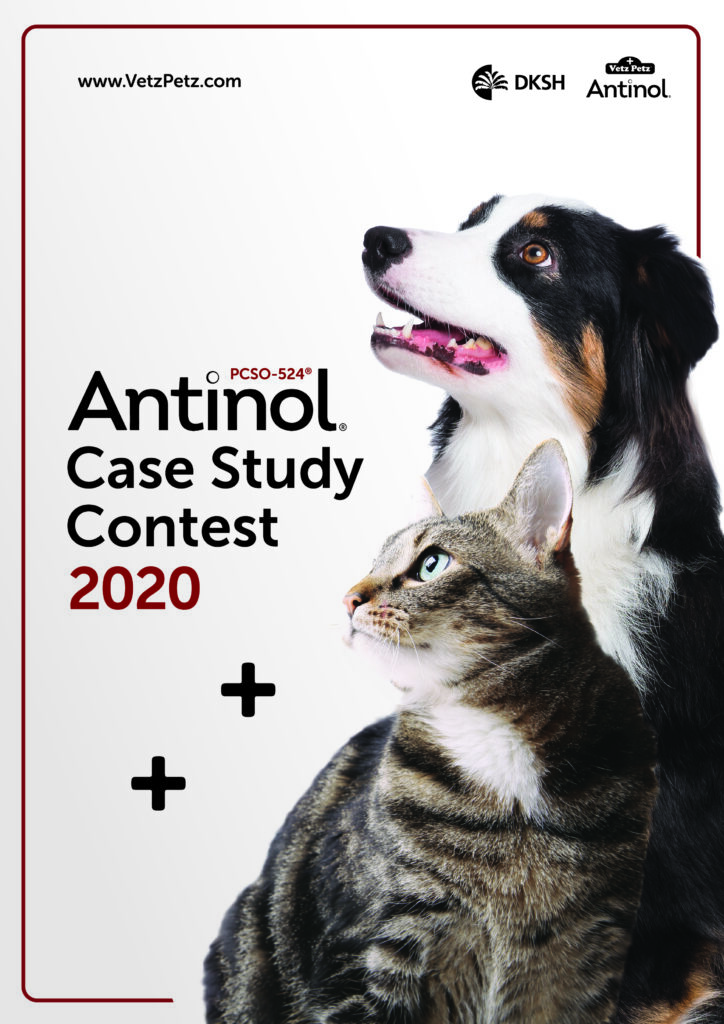
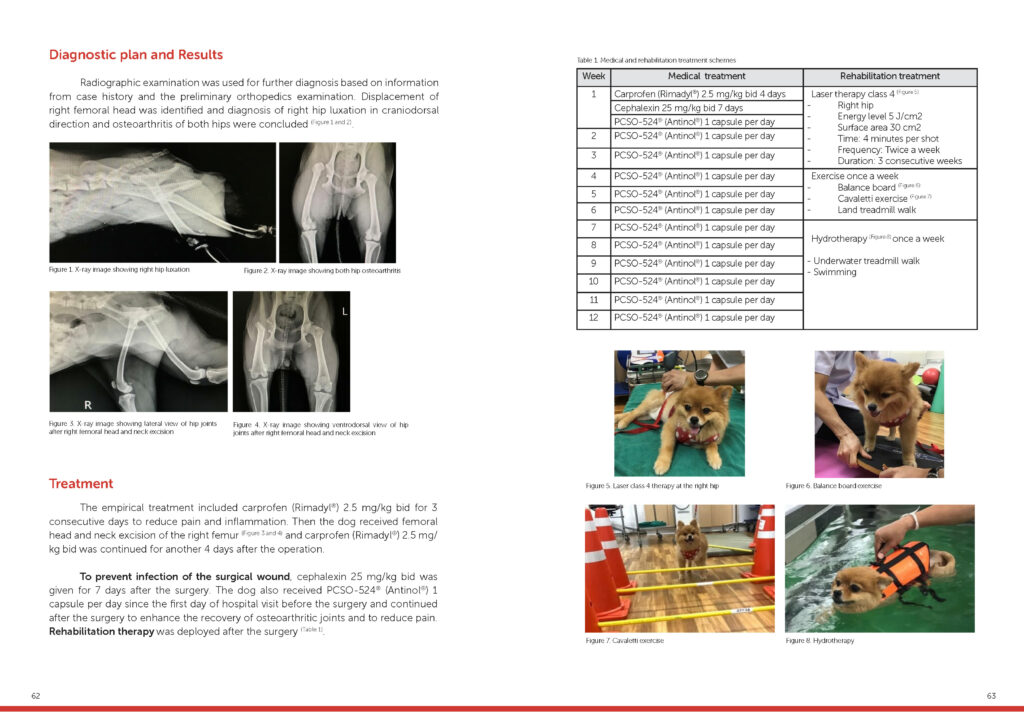
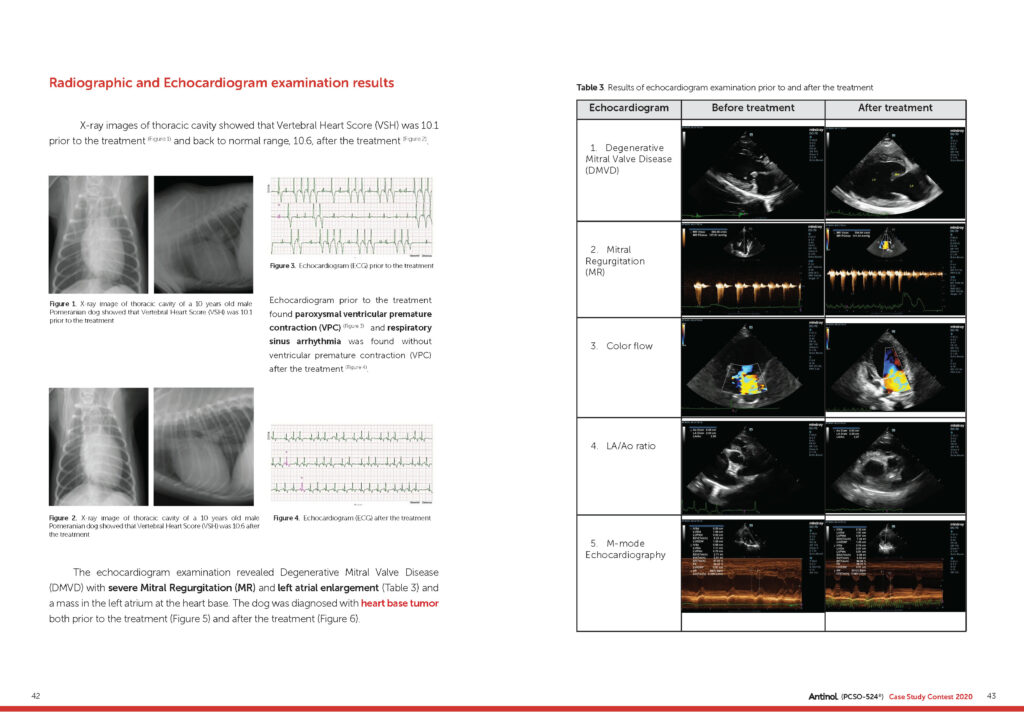
Effect of One Year Treatment with PCSO-524® on Feline Dermatophytic Pseudomycetoma

Feline dermatophytic pseudomycetoma is fungal infections of the skin caused by dermatophytes (Microsporum spp.)
The diagnosis is based on histopathological test. The infection causes clinical lesion and chronic inflammation of the skin.
Long-term treatment is necessary with antifungal agents and anti-inflammatory drugs are recommended in case of severe inflammation.
Due to anti-inflammatory and skin enrichment effects of PCSO-524® (Antinol®), it is used for supportive treatment of feline dermatophytic pseudomycetoma in this case.
Administration of PCSO-524® (Antinol®) also reduces the risk of adverse effects from using other anti-inflammatory agents.
The use is simple and can reduce the dosage of other medications, particularly in difficult cats that do not cooperate with taking oral medicine.
Treatment outcome can be evaluated from physical examination, hematological and blood chemistry tests, and body weight gain.
Over one-year treatment period, there was no signs of side effects from the treatment, the blood test results were stable and the quality of life and social interaction between the cat and the owner was improved.

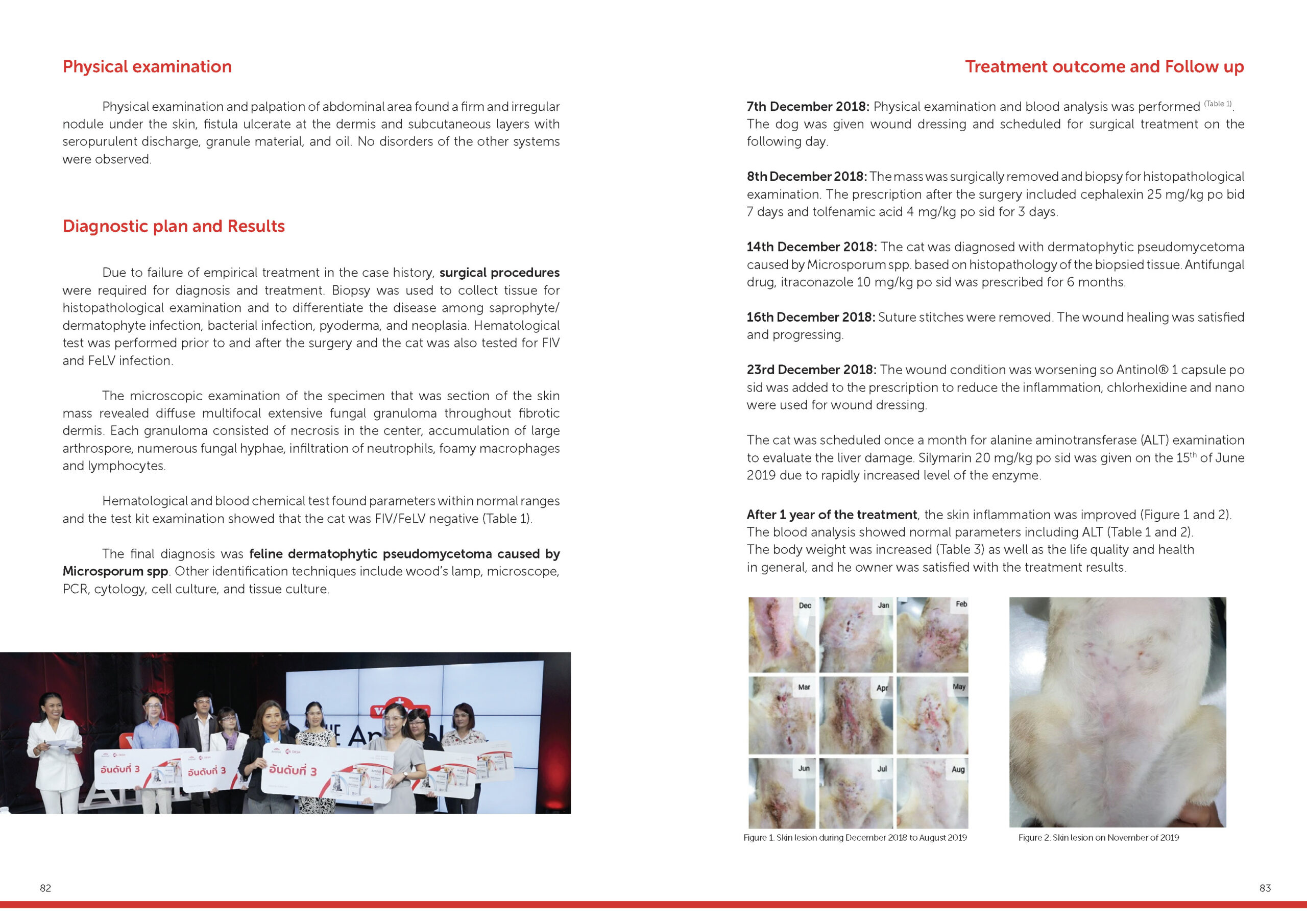
Use of PSCO-524® (Antinol®) and Casting for Treatment of Tetraparesis and Neck Pain Due to Atlantoaxial Instability and Subluxation of the 1st-2nd Cervical Vertebrae

A 7 months old male Pomeranian dog was admitted to Thong Lor animal hospital for signs of intermittent leg paresis and hyperesthesia during the past 2 weeks.
Physical examination found grade II tetraparesis, neck hyperflexion, spasm of cervical muscle, and cervical hyperesthesia.
X-ray examination showed atlantoaxial instability and dorsal subluxation of the first and second cervical vertebrae. The disease is congenital and commonly found in toy breed dogs (Itoh H. et al, ).
A cast was used to stabilize the joints for 12 weeks in conjunction with medicinal treatment including pain killer medicine, gabapentin, and 1 capsule of PSCO-524® (Antinol®) sid.
After one week of the treatment, the dog showed no sign of pain when touched but the signs of hind limb paresis still remained. The treatment was continued until the 10th week that gabapentin was terminated and no recurrence of pain was detected since then.
After 12 weeks of the treatment, the cast was removed and PSCO-524® (Antinol®) 1 capsule sid was continued and the dog did not show any progressive development of clinical signs.
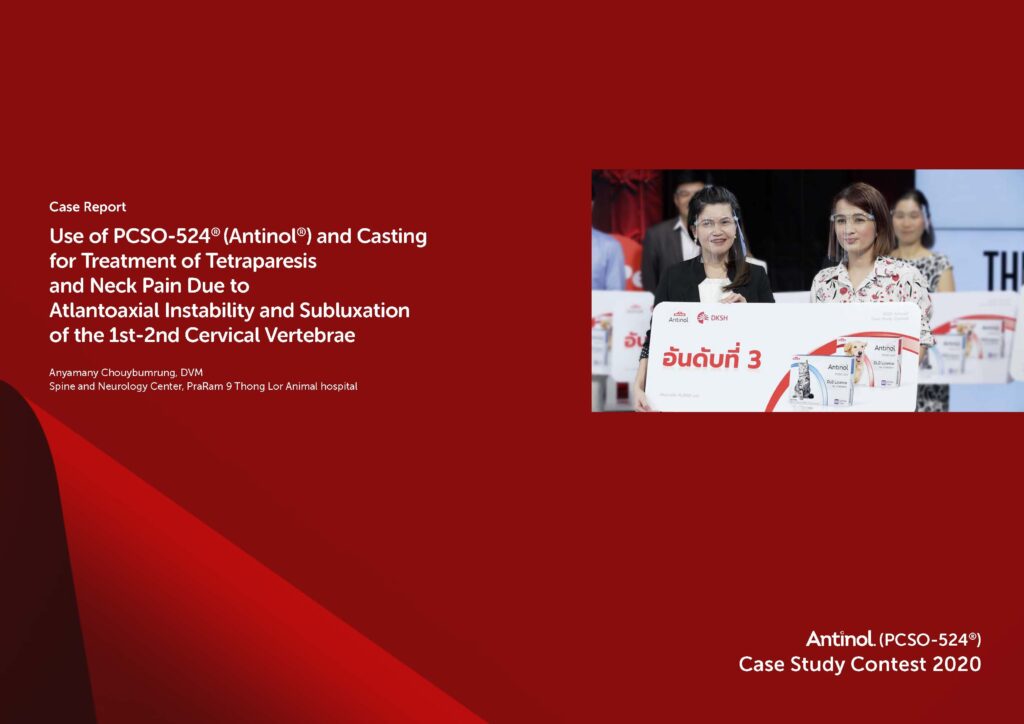
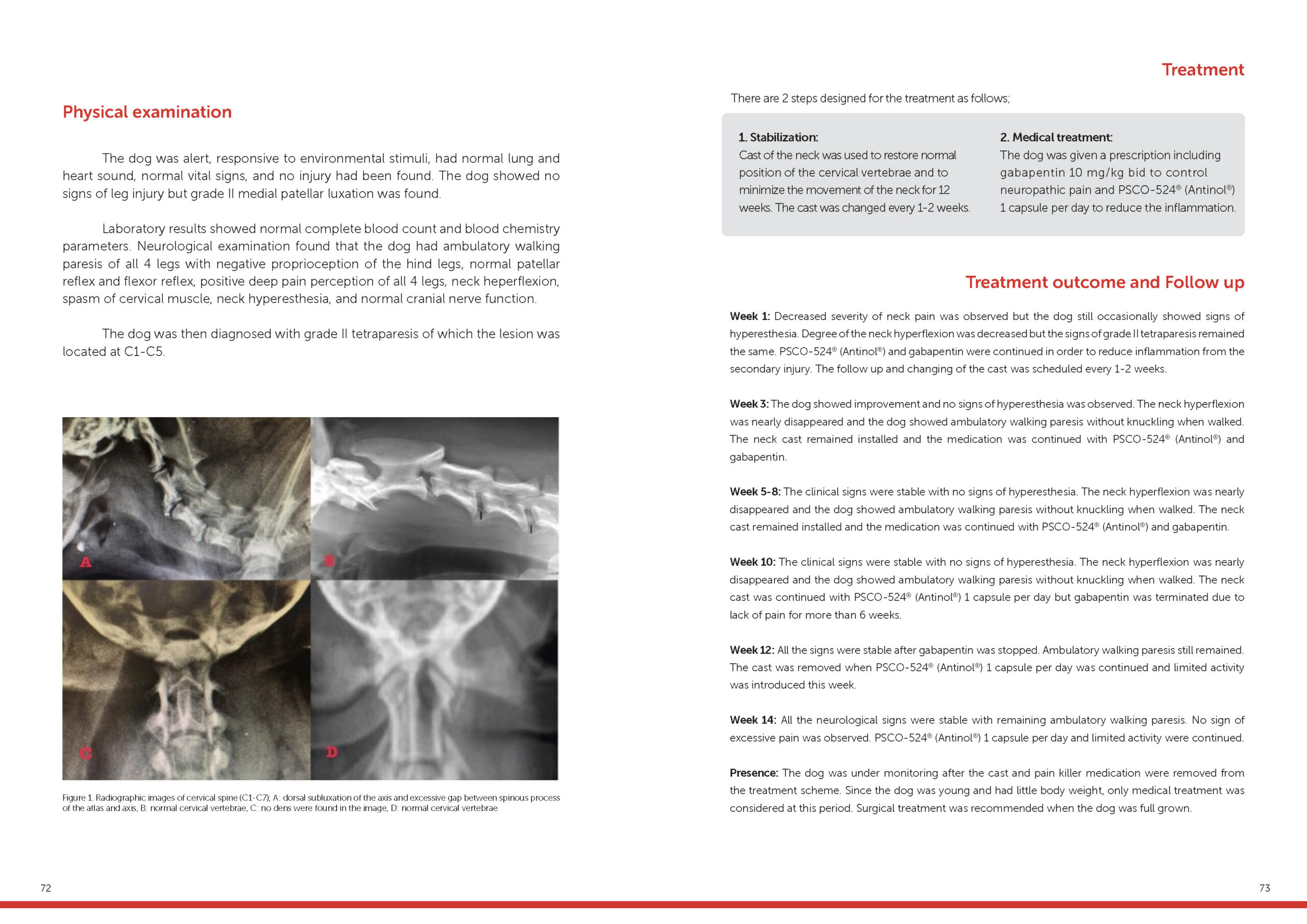
Use of PCSO-524® with Physical Rehabilitation to Regain Mobility in Dogs after Femoral Head and Neck Excision

An 8 years old Pomeranian dog showed acute non weight-bearing lameness of the right hind limb after high jumping. Preliminary examination identified pain at the right hip and radiographic images revealed right hip luxation.
Femoral head and neck excision was performed for the surgical treatment.
Multimodal treatment scheme deployed after the surgery consisted of neutraceutical PCSO-524® and physical rehabilitation using laser class 4, exercise such as Cavaletti exercise, balanced board, walking on treadmill, and hydrotherapy including walking under water and swimming.
Evaluation of the treatment during follow-up showed decreased pain score and severity of lameness, which was consistent with the owner’s report that described improvement of weight- bearing of the right hind limb and the quality of life.
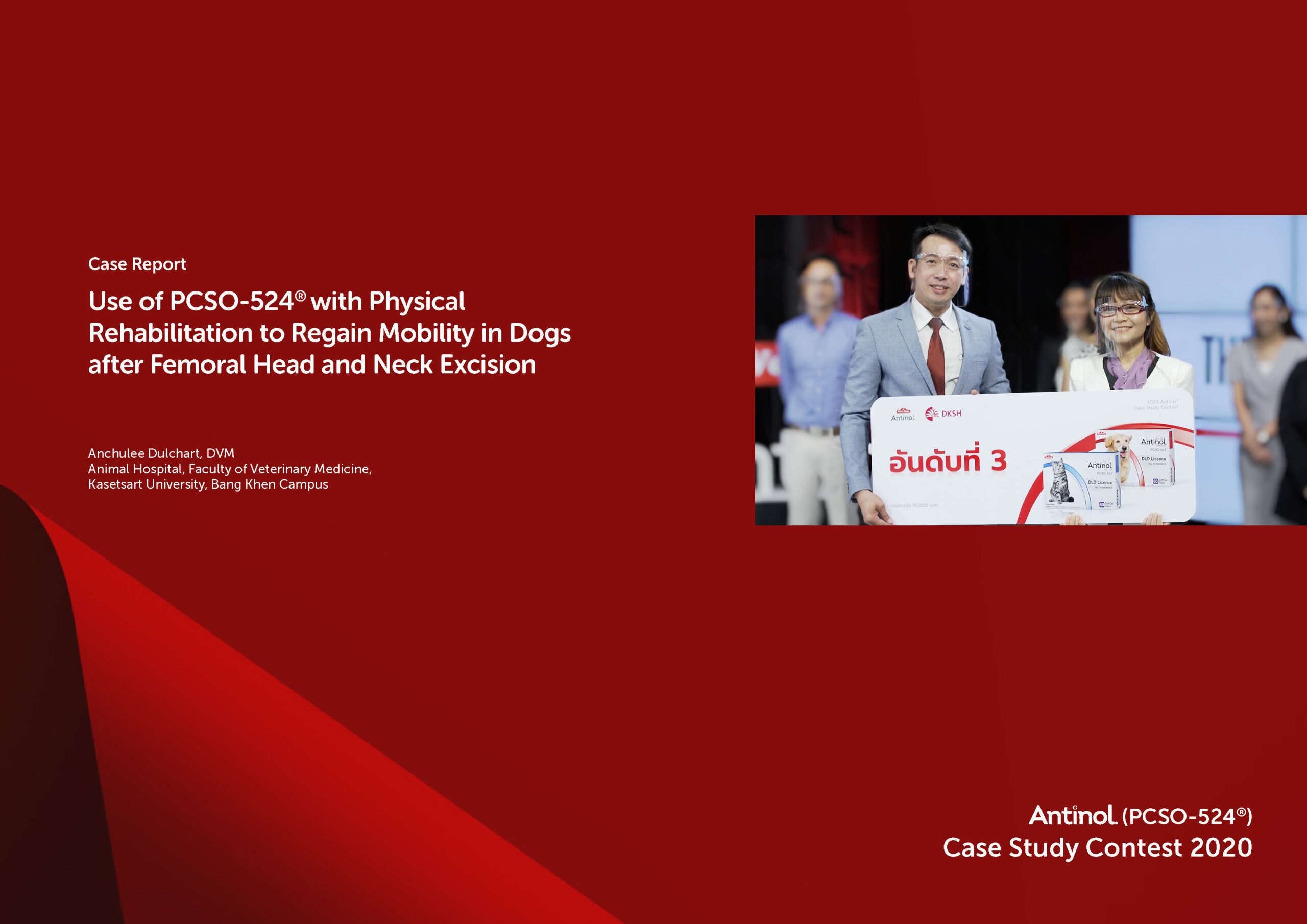
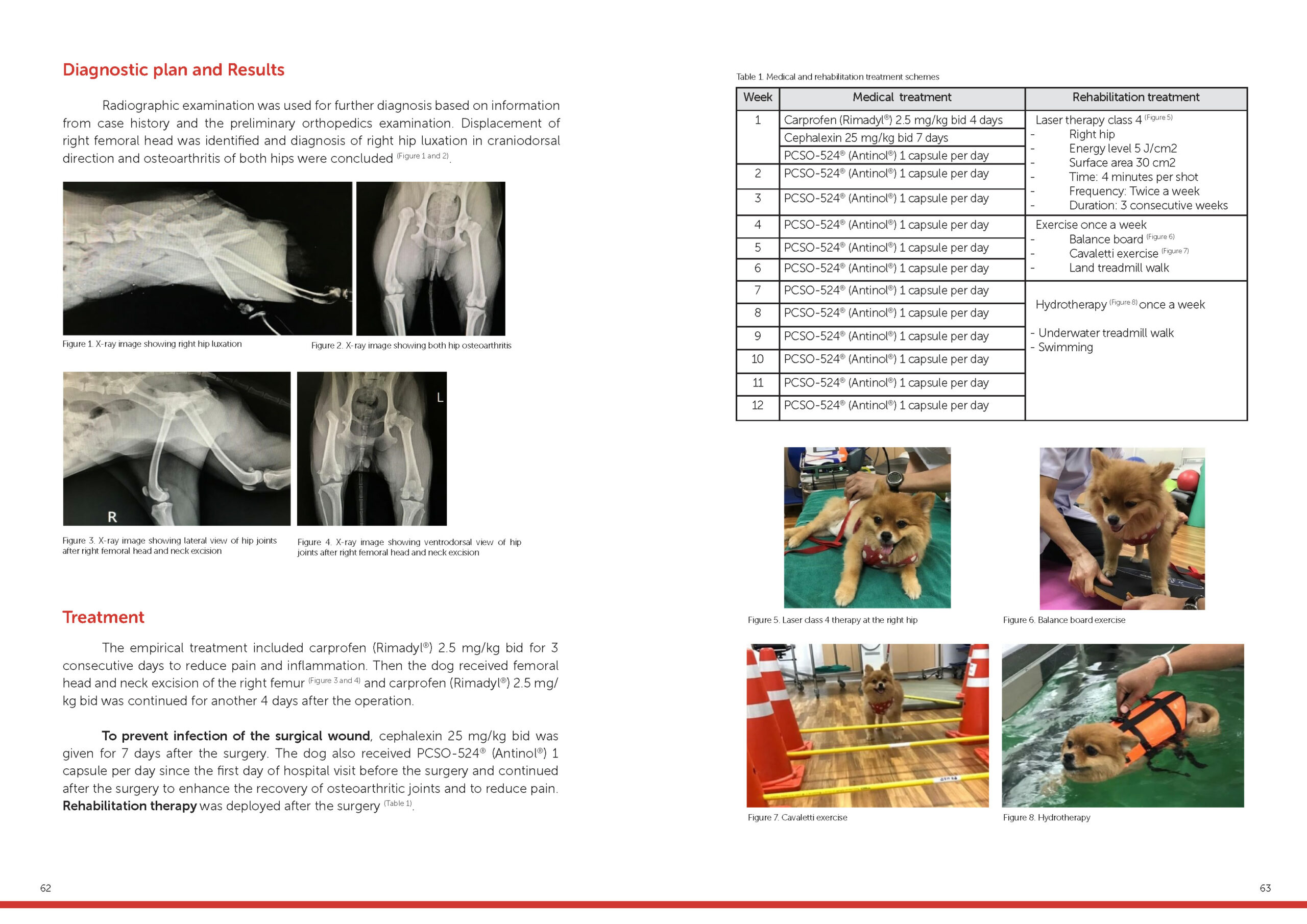
Use of PCSO-524®(Antinol®) in a Pomeranian Dog with Degenerative Mitral Valve Disease (DMVD) and Cardiac Tumor of the Left Atrium

A 10-year old Pomeranian dog with degenerative mitral valve disease (DMVD) and cardiac tumor of the left atrium was treated with pimobendan, ramipril, and furosemide in conjunction with PCSO-524® (Antinol®) as supplemental therapy.
After the treatment, the dog showed improved ability to conduct various activities, increased appetite and ingestion, weight gain and disappearance of paroxysmal ventricular premature contraction (VPC).
The C-reactive protein (CRP), which is an inflammatory marker in dogs, also decreased to normal level within 21 days of PCSO-524® (Antinol®) supplementation.


Use of PCSO-524® for Supplementary Treatment of Protein Losing Nephropathy in Animals

An intact male Shih Tzu dog weighed 5.8 kilograms was referred to Suvarnachad Animal Hospital with signs of polydipsia, polyuria, edema and ascites due to accumulation of fluid in the abdominal cavity.
Biochemical tests found hypoalbuminemia, hyperglobulinemia, hypercholesterolemia, increased urine protein creatinine ratio (UPC) to 5.88 and no signs of inflammation or infection of the urinary tract.
Protein losing nephropathy from glomerular disease was diagnosed based on the biochemical indicators. Medication was given to the dog in order to control kidney damage and minimize the clinical symptoms.
Anti-proteinuric drug, for example ACE inhibitor to reduce blood pressure, was particularly selected for the treatment in conjunction with prednisolone and PCSO-524® as supplementary treatment.
During the 10 months follow up, the dog showed improvement of clinical symptoms, no edema, lack of accumulation of fluid in abdomen cavity, and serum albumin that was increased to normal level.

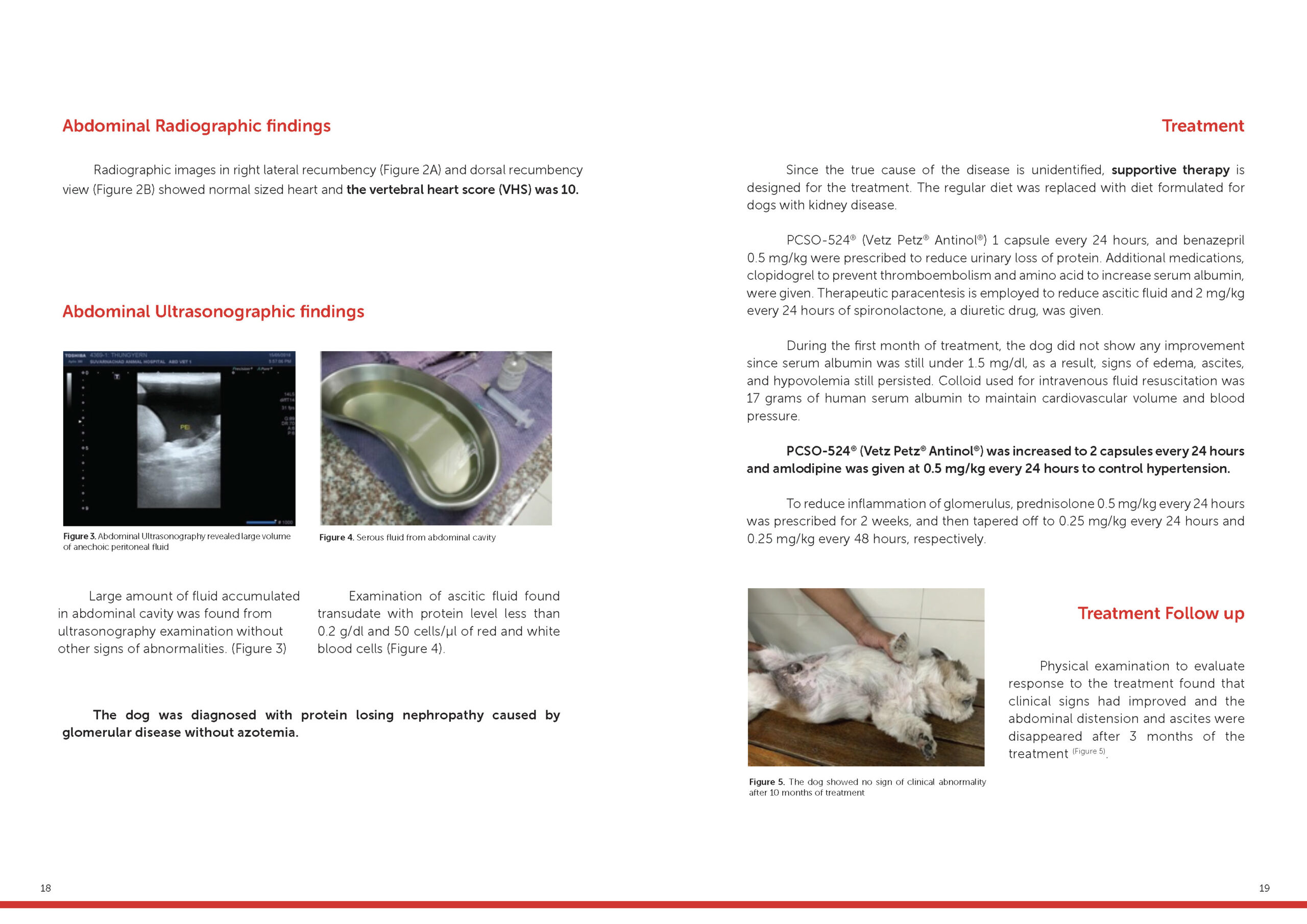
Use of PCSO-524® and Cyclosporin for Treatment of Immune-Mediated Polyarthritis in Dogs

An 8 years old Chihuahua dog was admitted to the Small Animal Hospital at Chulalongkorn University due to signs of depression, lethargy, lameness and joint effusion. Hematological examination and test of synovial fluid indicated Immune-Mediated Polyarthritis (IMPA).
Prednisolone, Gabapentin and Amoxillin-clavulanic acid were prescribed for the treatment. Abnormally increase of ALT, ALK and AST enzyme was observed 1 week later, therefore, the treatment was changed to Cyclosporin, Gabapetin, and PCSO-524®. The clinical signs continued to improve after the adjustment of prescription and Cyclosporin and Gabapetin were terminated after 3 and 4 months, respectively.
A follow-up examination at 4 months later showed no signs of lameness and joint effusion and no adverse effects caused by the long-term use of PCSO-524®.
The success of IMPA treatment is a result of rapid diagnosis and appropriate treatment protocol. Follow-up for treatment evaluation is necessary during the treatment course in order to reduce the impact on health and minimize the medication dosage without risk of causing adverse effects or recurrence of the disease.

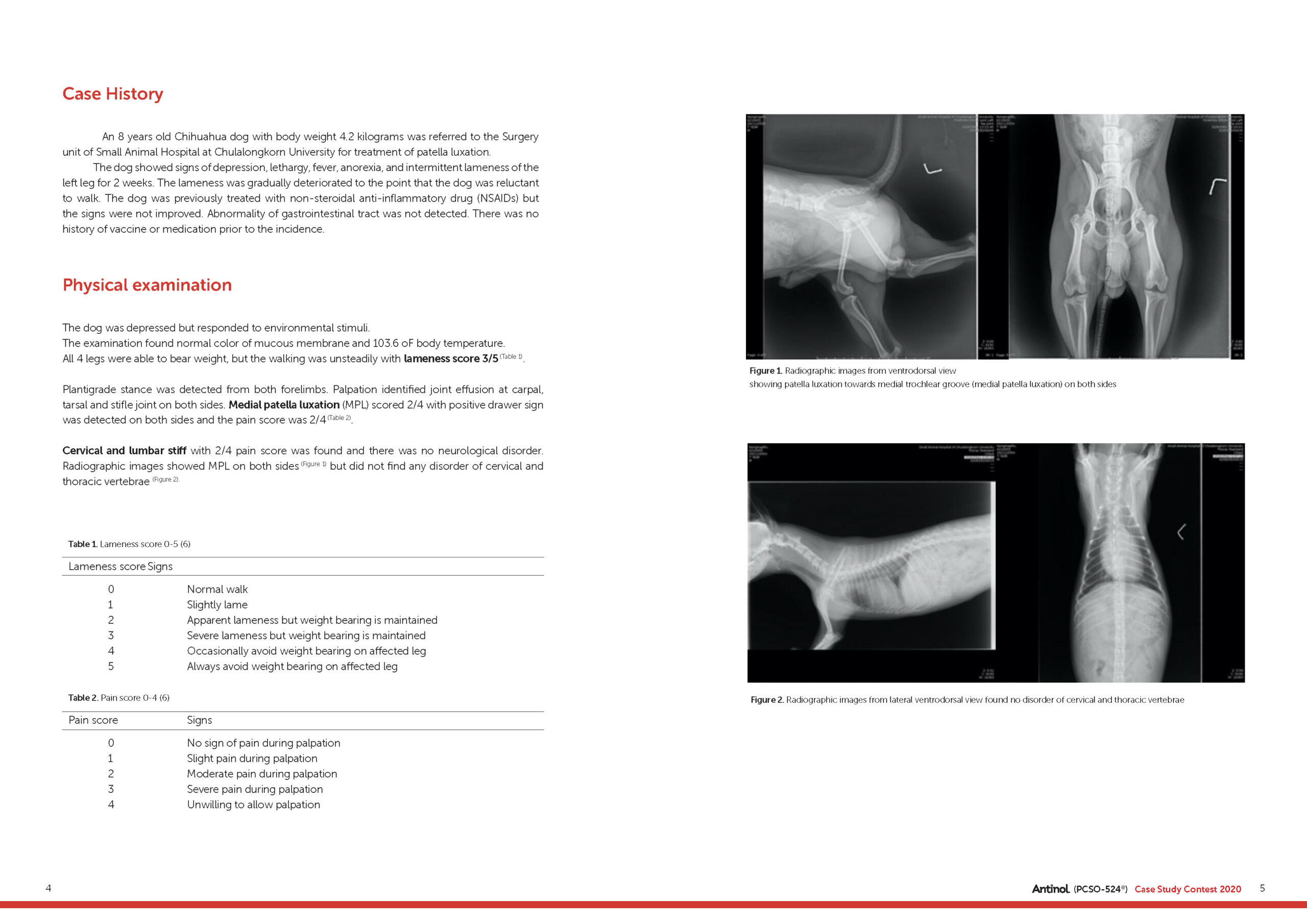
Antinol® Case Study Contest 2018

The 6 Case Studies from Antinol® Case Study Contest of 2018.
Antinol® Contest has been organized successfully for 3 years since 2016 in Thailand.
The key objective of this scientific contest is to encourage knowledges sharing amongst the Vet practitioners on how to treat the companion animals inflammatory cases safely & effectively by using Antinol in conjunctive with others medicines especially the NSAIDs (Non Steroidal anti-inflammation drugs) which is the drug of choices of anti-inflammatory problems.

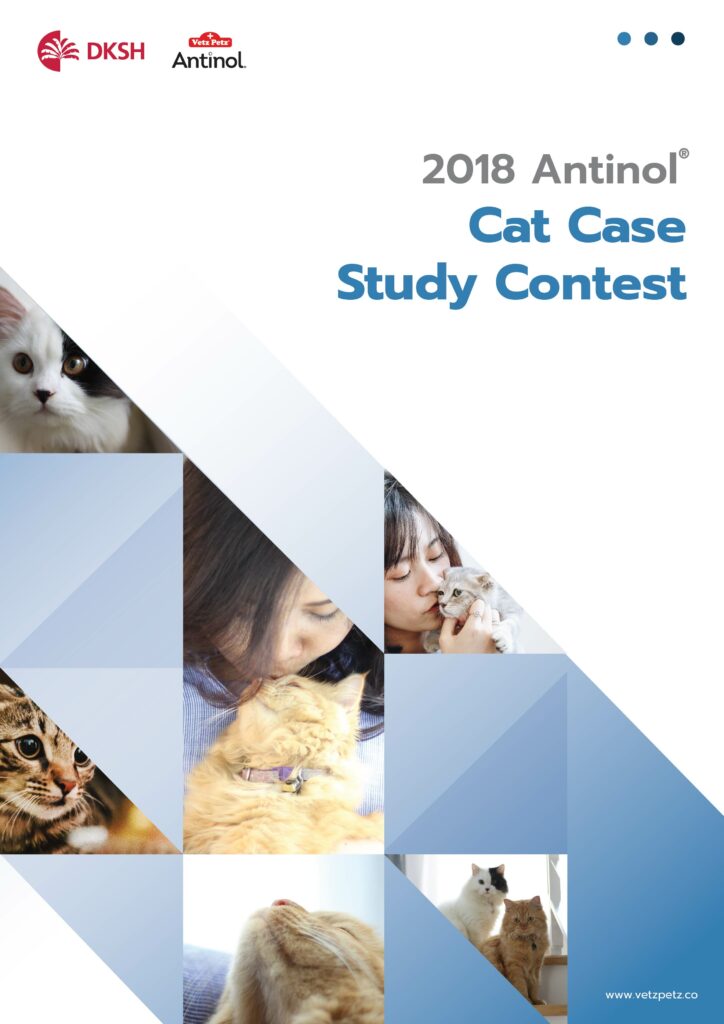
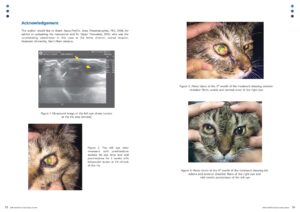

PCSO-524® (Antinol®) Use in Persian Cat with Dynamic Hypertrophic Obstructive Cardiomyopathy (HOCM)

A Persian cat aged 21 years was diagnosed with Dynamic Hypertrophic Obstructive Cardiomyopathy (HOCM) and treated with PCSO-524® (Antinol®) for 45 days.
The cat regained quality of life and daily activities such as grooming and walking, increased appetite, ingestion and weight gain after the treatment. Serum Amyloid A (SAA), which is an inflammatory marker in cats, was reduced down to normal after 15 days of PCSO-524® (Antinol®) administration.
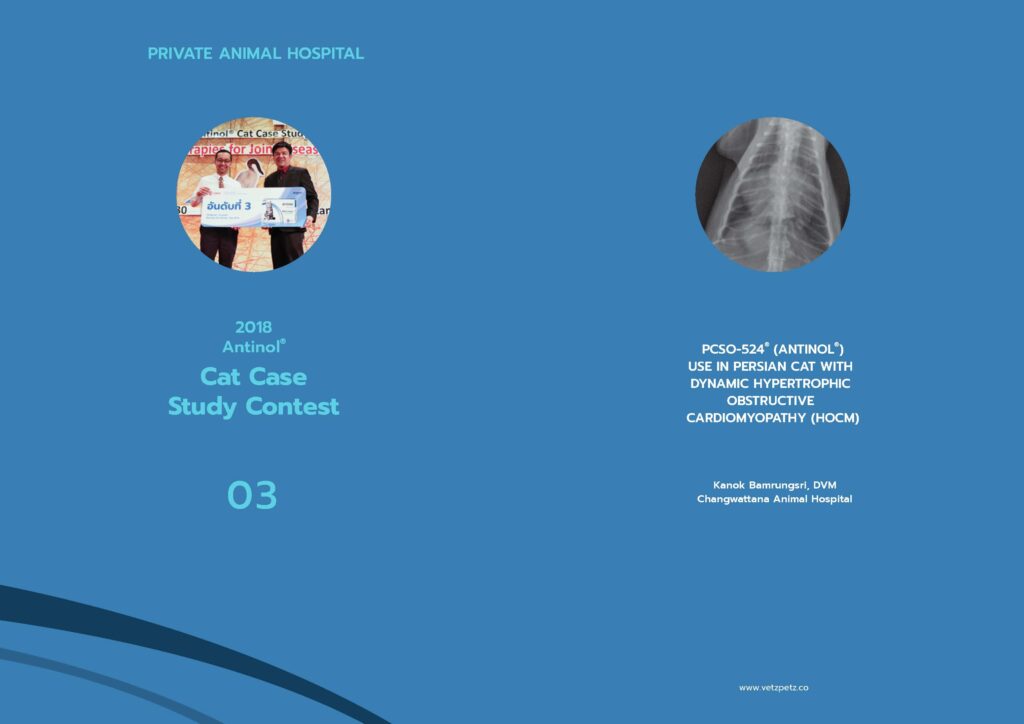
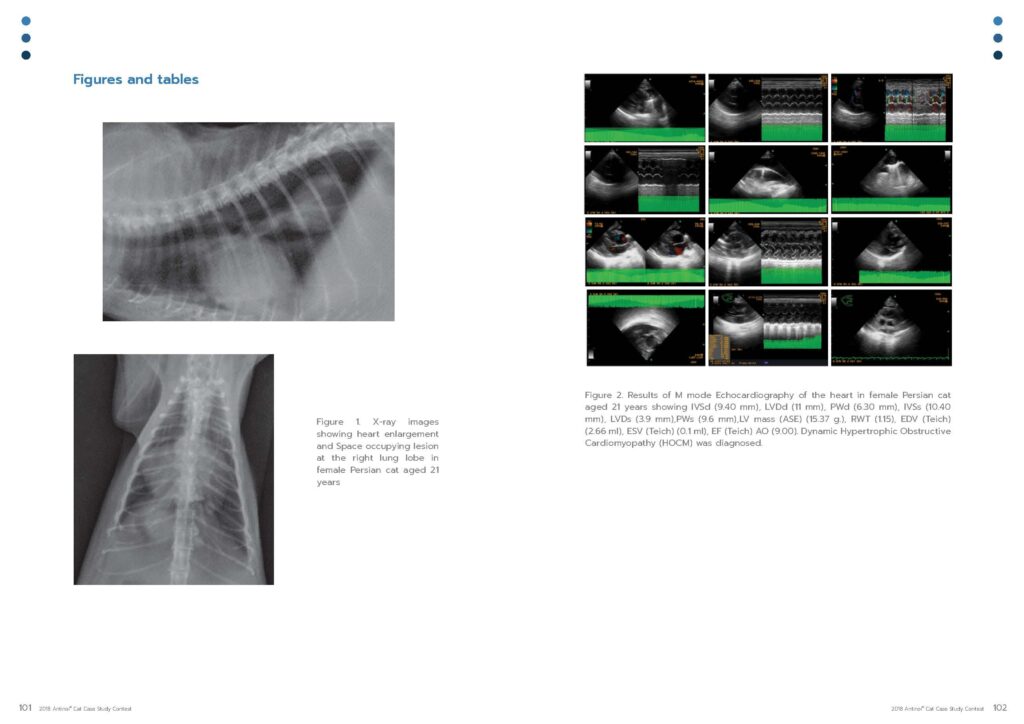
Updated Study Topics
New researches and publications related to PCSO-524® and its result in clnical test submitted by veterinarians on the global conferences every year and the data keeps growing with more studies conducted


 Authors:
Authors: